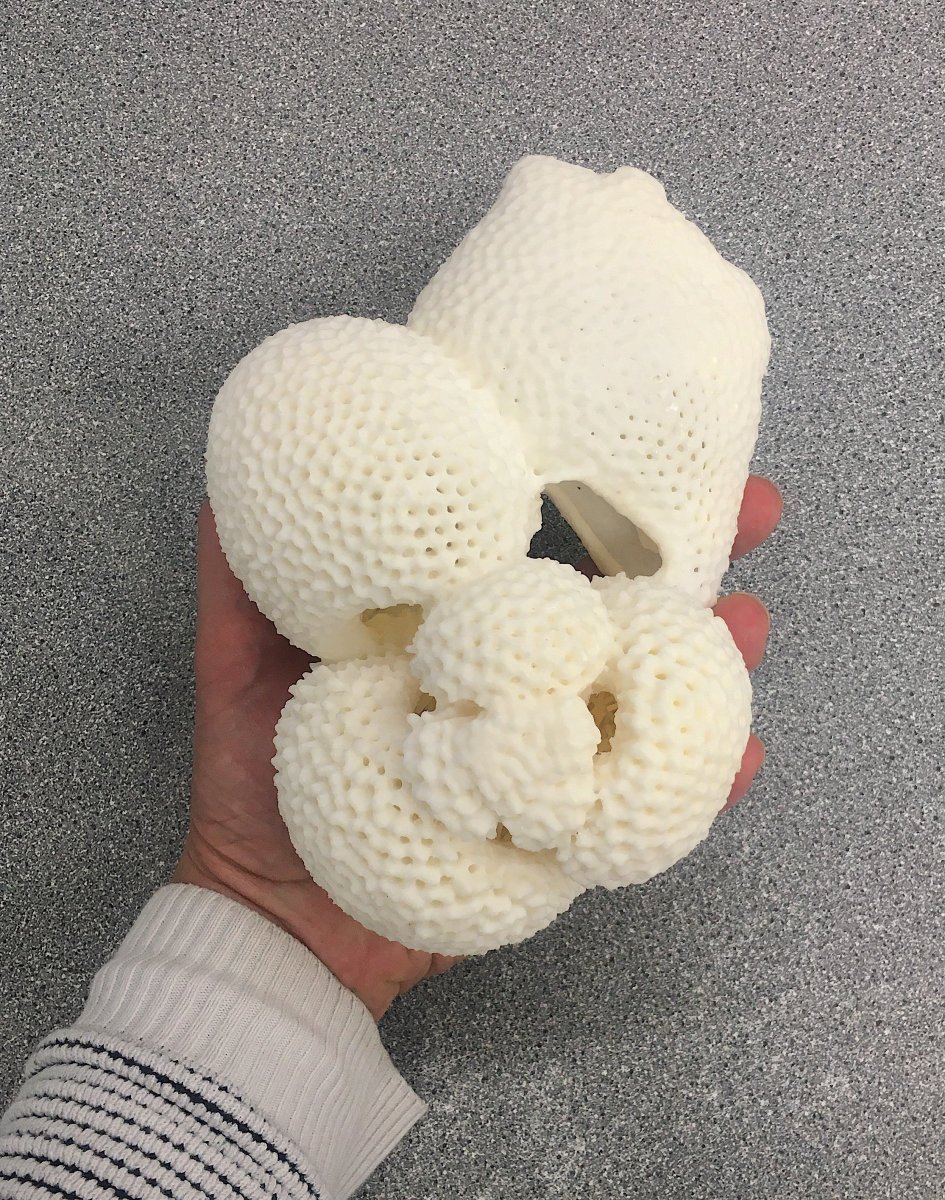The Instrument
For outreach and educational activities, we can produce macroscopic models of microfossils, such as benthic and planktonic foraminifera, using BOSCORF’s 3D printer. Furthermore, when bespoke components are needed for your machine or instrument, custom-fit parts can be sculpted.
Major benefits of 3D printing:
- Convenient – bespoke sample cups and sample holders
- Cost reduction – custom made machine or instrument parts
- Great props – macroscopic models of microfossils for outreach and education
The options are unlimited with this 3D printer. We have scans/designs available of several planktonic and benthic foraminifer species.
Methods
Once a design, model, or scan has been obtained, the user can choose from a suite of soft and hard plastic resins. The resin is loaded, and the printing can start. Layer by layer the resin is added to the model and cured by UV light. The product is a flexible or hard-plastic design.
Applications
The 3D printer makes resin models, for example this model of the extinct Late Pliocene/Early Pleistocene planktonic foraminifer Globigerinoidesella fistulosa, which is ~300× magnified.
The 3D printer has several applications:
- Microfossil models are a great outreach tool
- Custom made sample holder or instrument parts

